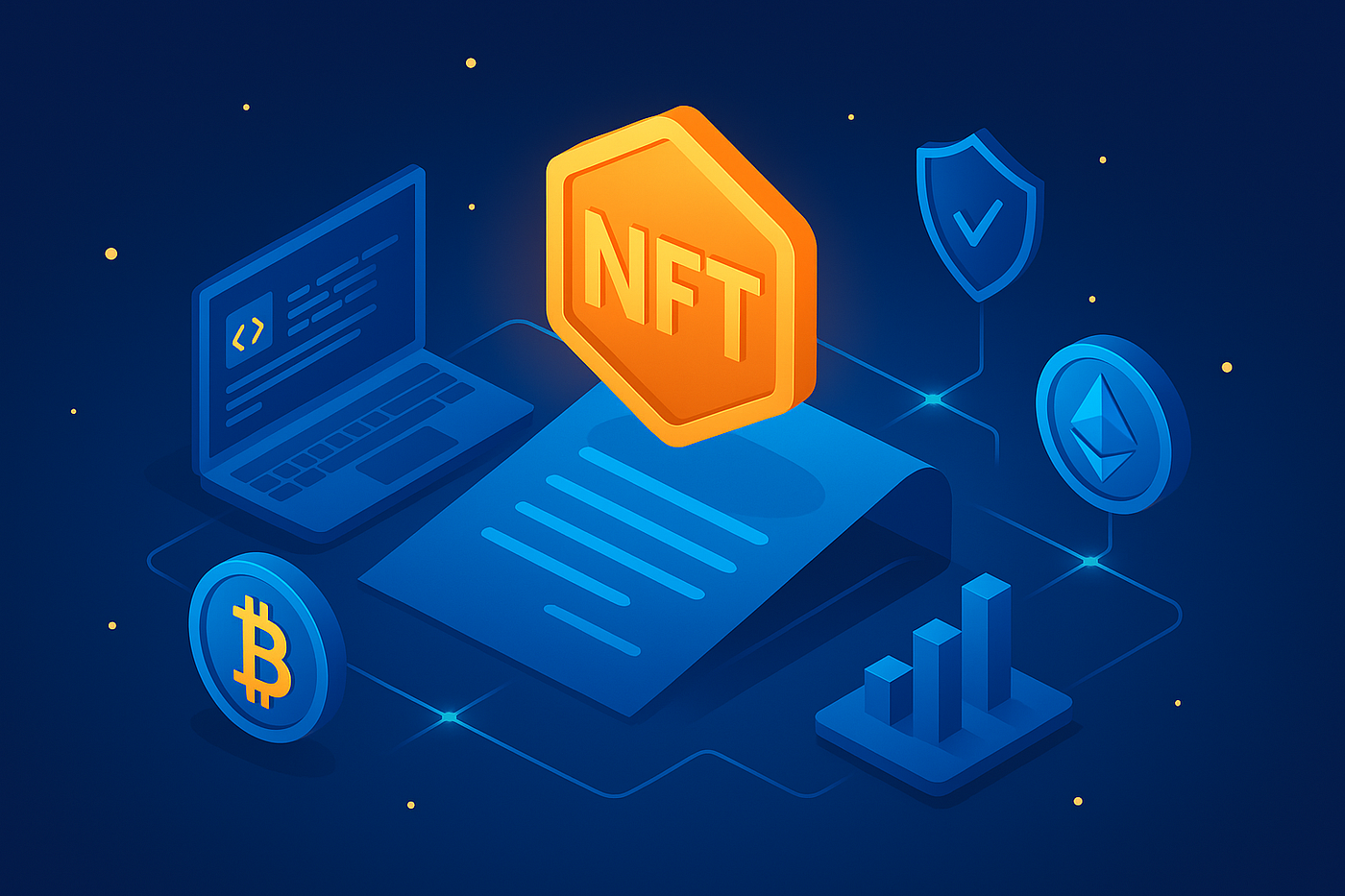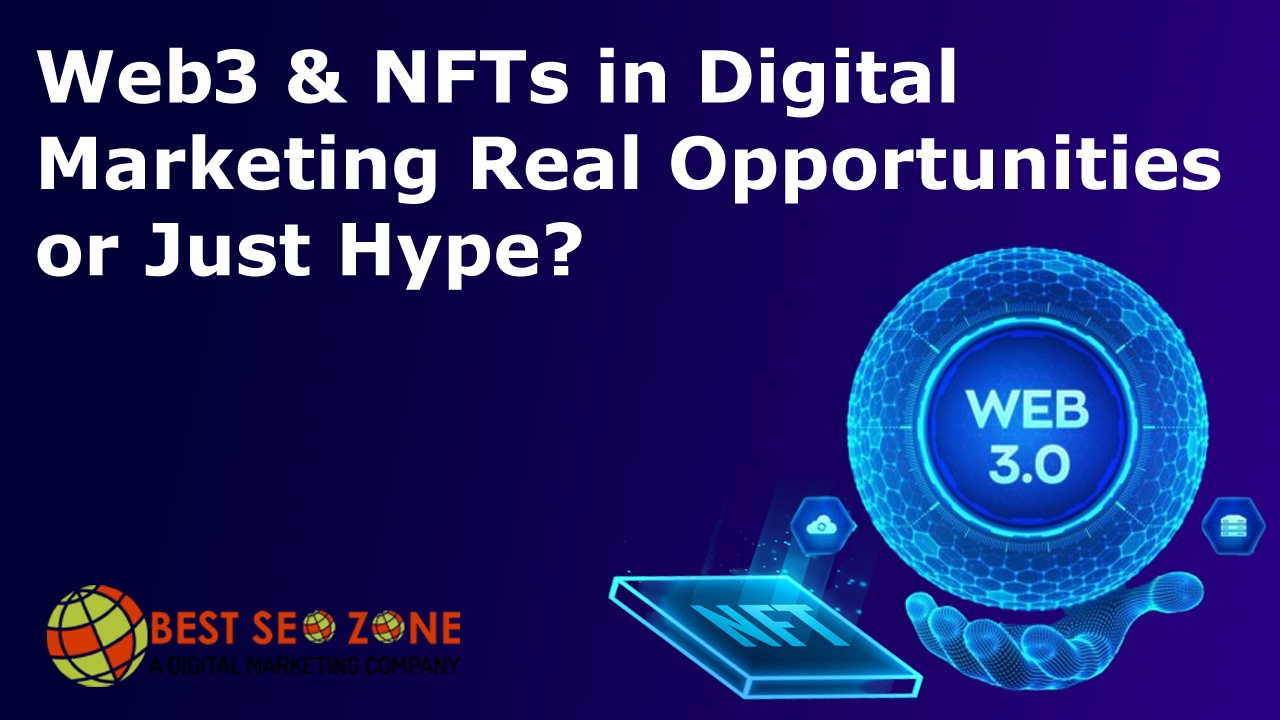The digital marketing landscape is changing faster than ever before driven by new technology and consumer behaviors.The biggest shifts we are witnessing today are the rise of Web3 and NFTs (Non-Fungible Tokens).Unlike traditional marketing channels these innovations promise not only to capture attention but also to create ownership exclusivity and deeper emotional connections between brands and their audiences. For businesses willing to explore this space the opportunities can be groundbreaking.
At the same time many marketers remain skeptical.They argue that Web3 and NFTs are just hype with most campaigns failing to deliver real business results. Concerns about technical complexity consumer awareness and regulatory uncertainty make it difficult for every brand to jump in. In fact many NFT projects have been short-lived raising the question of whether this trend is sustainable or simply another digital bubble waiting to burst.
Web3 and NFTs are neither a guaranteed goldmine nor a complete waste of time. When used strategically they can transform how businesses build trust, engagement and loyalty.But when adopted without a clear plan they risk becoming nothing more than a flashy gimmick. This article explores whether Web3 and NFTs in digital marketing are real opportunities or just hype to help you decide if they’re worth integrating into your strategy.
Table of Contents
What Is Web3 and Why Does It Matter for the Future of Digital Marketing
The internet has gone through massive transformations from Web1’s static pages to Web2’s interactive platforms powered by social media, e-commerce and centralized data. Now the rise of Web3 marks the next major shift.Built on blockchain technology Web3 is not just about decentralization but also about trust and transparency in digital ownership.For digital marketing this change means rethinking traditional strategy and adopting an innovative approach to engage modern audience who demand control security and authenticity in their online experience.
The Core Principles of Web3 and Its Decentralized Foundation
At its core, Web3 represents the decentralized evolution of the internet built primarily on blockchain technology.Unlike Web2 where large corporations control most user data and act as intermediaries in the Web3 shift this power is shifted directly into the hand of individual.This means users no longer depend on a centralized platform to store and monetize their information they can do so independently with full transparency and ownership. Decentralization is what makes Web3 unique. Instead of a single entity having authority data and transactions are distributed across a network making them secure transparent and resistant to manipulation.For the digital market this shift opens new opportunities to build trust and authenticity with their audiences.Consumers are no longer just passive participants in a brand’s journey they become active stakeholders who can own token digital assets or NFTs that prove their connection with a brand.This new foundation changes how marketing works.One-sided communication in Web3 enables community-driven ecosystems where customers are engaged partners rather than just buyers. By embracing decentralization the marketers can foster stronger relationships built on transparency inclusivity and real value.
Web2 vs. Web3: What Marketers Need to Know About the Change
The difference between Web2 and Web3 is more than just a technological update it’s a complete transformation of how people interact online and how businesses approach marketing. Web2 often called the social web gave rise to platforms like Facebook Instagram and YouTube. These centralized platforms made it easier for brands to reach a global audience, but also came with limitations. User data was controlled by the platforms and businesses had to depend on paid advertising and algorithm driven visibility to connect with customers. In short power largely remained in the hands of tech giants.Web3 on the other hand introduces a decentralized internet where users regain control. Powered by blockchain technology this new model removes the need for intermediaries. Consumers can own their digital identity assets and data while interacting directly with brands. For marketers this is a revolution. Instead of renting attention through ads they can offer audiences tokenized rewards NFT-based memberships, or community-driven engagement that fosters genuine loyalty.The most important takeaway for marketers is that Web3 emphasizes transparency and value exchange. The Web2 campaigns often left users questioning how their data was being used. Web3 builds trust by making every transaction and interaction verifiable on the blockchain.This creates a level playing field where brands must provide real utility and experiences rather than relying on intrusive ads.
Barriers to Web3 Marketing Success: Understanding the Risks and Limitations
Web3 has opened the doors to a new era of marketing offering decentralization ownership and innovative engagement models.However while the opportunities are vast the road to success is filled with challenges that brands cannot ignore.Many businesses rush into Web3 campaigns with high expectations only to face setbacks due to the ecosystem’s is a risks technological hurdles and strategic limitations.To truly leverage Web3 marketers must understand these barrier and plan accordingly.
Lack of Consumer Awareness and Education
Most consumers are still unfamiliar with concept like blockchain NFTs and decentralized apps. For many setting up a crypto wallet or understanding digital asset ownership feels intimidating. This knowledge gap forces brands to invest time and resources in educating their audience before they can even launch campaigns effectively.
Technological Complexity and Accessibility Issues
Unlike Web2 platforms or Web3 technologies require more technical know-how. Navigating decentralized apps handling private keys and using blockchain tools can be overwhelming for mainstream users.This creates a barrier to adopting a meaningful campaign often only reaches a small segment of tech-savvy consumers rather than the mass market.
Security Risks and Fraud Concerns
Web3’s decentralized nature provides transparency but it also attracts scams hacks and fraudulent projects. High-profile cases of stolen NFTs or compromised wallets have made users cautious. If a brand’s Web3 initiative is linked to such risk even indirectly it could severely damage trust and reputation.
High Costs and Unclear ROI
Developing Web3 campaign from minting NFTs to creating decentralized platform requires significant investment. At the same time return on investment is difficult to measure since this space lack the proven metrics and benchmark available in traditional digital marketing. For many businesses this makes Web3 feel like a high-risk gamble.
Legal and Regulatory Uncertainty
Government worldwide is still shaping regulations all around blockchain crypto and NFTs.This lack of clarity creates a compliance risk for the brand.A campaign that complies today could face restriction tomorrow making long-term planning difficult and risky.
Scalability and Environmental Concern
Some blockchain network face scalability issues such as high transaction fees and slower processing speed. Additionally concerns about energy-intensive blockchains raise ethical questions for brands focused on sustainability and potentially alienating eco-conscious consumers.

The Future of Web3 and NFTs in Digital Marketing Hype or Long-Term Reality
The rise of Web3 and NFTs has sparked both excitement and skepticism in the digital marketing world.On one side advocate believe these technology will permanently reshape how brand connect with consumer offering more transparency ownership and engagement opportunity.On the other side critics argue that Web3 and NFTs are overhyped a trend that may lose relevance once the initial buzz fade.The truth likely lies somewhere in between but it is important to examine both perspectives to understand the long-term future of Web3 marketing.
Why Web3 and NFTs Could Be the Future of Marketing
Web3 shifts the power of the internet back to the user enabling decentralized ownership and authentic engagement.This makes it attractive for brands that want to build trust in a privacy-focused digital landscape.NFTs add another layer allowing businesses to create unique digital assets loyalty rewards and exclusive brand experiences that foster deeper connections with customers.For forward-thinking marketers this represents a paradigm shift in customer engagement moving beyond clicks and likes to true community building.
The Case for Web3 Being Just Hype
At the same time Web3 and NFTs face criticism for being more hype than reality.Market volatility scams and unsustainable projects have created skepticism among consumers.Many NFT launches have failed to deliver lasting value leaving buyers with little more than digital collectibles that quickly lost relevance.Furthermore the steep learning curve of blockchain technology continues to limit mainstream adoption.Without mass user understanding the Web3 risks being a niche trend rather than a global transformation.
The Middle Ground Hybrid Models of Marketing
The most realistic future may lie in a hybrid approach where elements of Web3 are integrated into the existing Web2 strategy.For example brand may continue to use traditional social media and advertising but layer on Web3 features like NFT-based loyalty program blockchain verified transparency or tokenized access to exclusive experiences.This blended strategy allows business to tap into the innovative aspect of Web3 while maintaining the reach and familiarity of Web2 platforms.
Long-Term Reality Adoption Will Take Time
Like any emerging technology widespread adoption of Web3 and NFTs will take time.The internet itself went through multiple phases before becoming the global necessity it is today. Similarly Web3 must overcome barriers such as education accessibility regulation and sustainability before it reach its full potential.For the brand that experiment early while acknowledging the risk can position themselves as a pioneer in the digital marketing landscape.
Final Thoughts: Web3 and NFTs in Marketing: A Balanced Perspective
Web3 and NFTs are transforming digital marketing by introducing decentralized transparency and customer ownership.All these technology empower brand to build stronger connection and reward loyalty in new creative way.Yet its adoption faces hurdles such as high technical complexity and regulatory uncertainty. While some campaigns succeed others fail raising doubts about long-term viability.The truth lies between hype and reality Web3 is an evolving layer of digital innovation.A brand that experiments early while managing risk will lead the future of marketing.

Dilshad Mushtaq is the founder and CEO of Best SEO Zone which is a prominent digital marketing agency based in Pakistan Since 2010. He is a professional website developer & Digital Marketer who can create any website and rank it on Google Page One.




